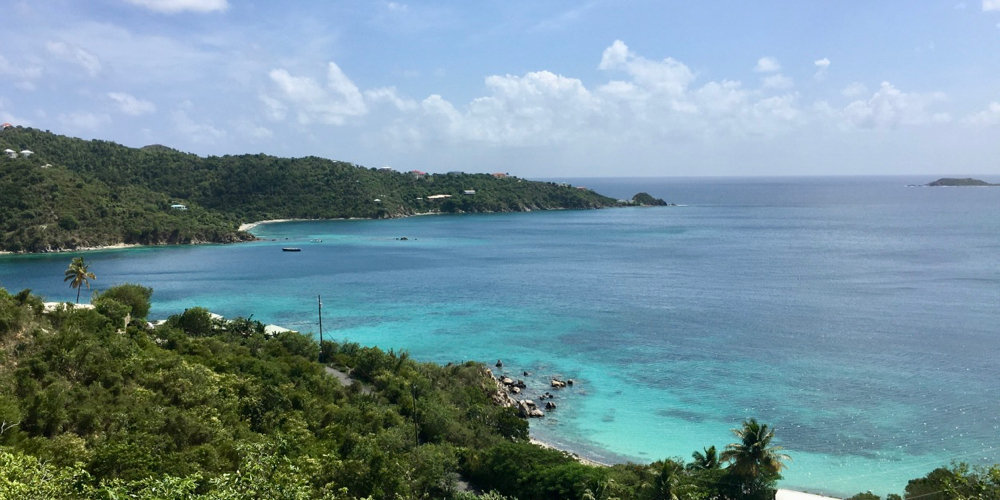
Part five of an ongoing series on the recreational boating industry in the U.S. Virgin Islands. Earlier stories in this series can be seen at the links below.
A quiet bay in a remote part of St. John has become the center of conflict between those who want to see it preserved as a marine sanctuary and those who want to see it developed and managed for the recreational boating industry. As the recreational boating industry continues to grow, the situation in Round Bay is a microcosm of issues that face the entire territory
Ten years ago, filmmaker Eric Zucker took underwater footage of all three Virgin Islands for a diving video for the Department of Tourism. Zucker shot a disproportionate amount in Round Bay on the east end of St. John and the surrounding area, not just because it was convenient to where he lived, but because the coral reefs were so alive.
When he looked at recent footage of the same spots and compared them to what he saw in 2011, he felt compelled to document the degradation of the underwater landscape.
Several months ago, Zucker posted three short films on his website, “Sunlit St. John.”
He made the films to convince others of the necessity of taking steps now to preserve fragile marine habitats before it is too late.
“It’s been happening so fast. Now ‘Our house is on fire,’” Zucker said.
In the first short film, Zucker follows a yacht’s long anchor chain as it rakes the seafloor, destroying seagrass and entangling coral as it swings back and forth in the current.
Zucker said he wasn’t aware at the time of the loud and abrasive whine of a motorboat passing above while he was filming.
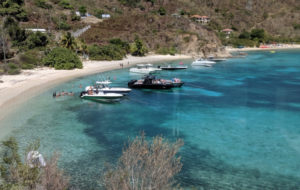
“I was shocked when I heard the sound picked up by the microphone on my underwater rig,” Zucker said.
He now believes the noise from constant boat traffic is contributing to the decline in Round Bay’s turtle population.
Four turtles have died at three different beaches on St. John in recent months, all at beaches with significant amounts of boat traffic including Round Bay. Experts believe at least some of the deaths resulted from boat strikes.
In the last of the three short films, Zucker shows footage of his two young teenage daughters as they dive down among the coral canyons in the bays on the East End of St. John. Their exploration of deeper reefs shows us what’s at stake – healthy corals that have largely been spared from the ravages of anchor damage and climate change.
But the film also includes signs of potential destruction – a white patch on a healthy brain coral indicates the growing threat of Stony Coral Tissue Loss Disease, and a large boulder coral – uprooted by storms – lies on its side like a desecrated tombstone.
Zucker wants to make absolutely clear his position on the development of the East End. Like many who live on the East End and belong to the Friends of Round Bay, he wants to see enhanced enforcement of existing laws that limit the maximum speed limit for motorized boats to 6 mph and outlaw jet skis, water skis, wakeboards and other thrill-craft.
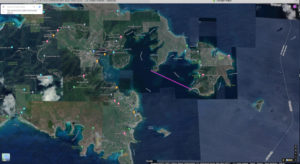
In addition, he wants to see Round Bay established as a marine sanctuary, with no overnight anchoring from Turner Point to Long Point.
However, Zucker is in favor of placing five moorings for dive boats and five moorings for dinghies for day-use only.
“We encourage and welcome respectful sharing of this living museum, but with enforced rules so that it lasts for everyone. We welcome all swimmers, snorkelers, divers, kayakers, paddleboarders, sailors on dinghies and other sailboats sailing/racing through, nature watchers, educational projects, research projects, coral reef experiments, etc.,” he said.
“Round Bay is one of our last living bays; it is adjacent to a national park; it is a turtle hatching and nesting location; it is the final resting place of an historically designated wreck (the Santa Monica); it is home to a traditionally, historically and culturally-rich community with deep connection to the sea,” he said.
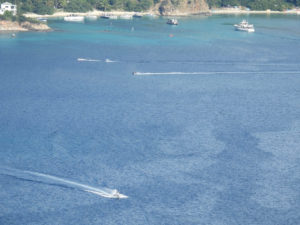
Zucker, who was raised on St. Thomas, is quick to say that he grew up on boats. He can recall diving in the 1960s in Charlotte Amalie harbor and in Trunk Bay “when the reefs were fully loaded.”
“I am not anti-marine – but the bottom line is this: our bays are mostly dead, and it’s because of human activity, including climate change,” he said.
Zucker disagrees with those who want to install overnight moorings in Round Bay as a way of preventing damage from careless anchoring.
“Moorings are just the beginning of the end,” he said. “I know of no bay with moorings on St Thomas or St John that is still alive, and that is because growing human impact is what destroys them. Moorings make that process happen more easily and more quickly.”
On the “Sunlit St. John” website, Zucker features interviews with generational St. Johnians as they consider the ways the island has changed and what’s ahead as the community changes and pressures for development mount.
Zucker believes the governor’s push to build up the charter boat industry is taking its toll on natural resources, particularly on St. John. Furthermore, policymakers on St. Thomas and St. Croix are not heeding the cries from St. John residents about the harm being done, he said.
“We are not desperate for tourists on St. John,” he said. “We don’t need to lunge for quantity over quality tourism.”
Zucker discounts the “not in my back yard” argument – that the people fighting for preservation are simply those who have built their homes and now want to exclude others. That argument tends to pit community members against each other, and Zucker said he doesn’t find that productive.
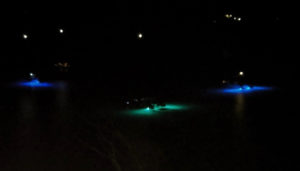
“Preservation is not just for the benefit of a few wealthy white people. This is about what I had as a kid. This is about what I want for my kids. It’s time to make the right decisions. This is a seminal moment; it’s time to try some new things,” he said.
He hopes that those who go to his website will find the content more aspirational than critical.
“It’s about being what we want to be rather than what we’re sliding into,” he said.
Managing Round Bay as a recreation area for boaters will not save the reefs, Zucker believes.
“Only preservation pays dividends forever,” he said.
In the next installment in the series, the Source presents arguments in favor of managing Round Bay for recreational use.
In an upcoming story, the Source will focus on what can be done to further the recreational boating industry while preserving marine, coastal, and cultural environments. We welcome your comments and suggestions. Please send them to amy.roberts@visource.com.
We also will publish a story on the growth of the charter business from the early days. If you have photos or anecdotes to share, please send them to amy.roberts@visource.com. Be sure to include the approximate dates, and names of any people, boats and locations in the photos as well as give credit to the photographer if possible.
To read the earlier installments of the Boating in the USVI series, follow the links below.
Part 1 – Recreational Boating Industry Thrives on St. Thomas and St. John
Part 2 – Laws to Create Restricted Areas Offer Inadequate Protection
Part 3 – Tensions Mount in Quiet East End of St. John
Part 4 – Pandemic Leads to Crowding at USVI Anchorages